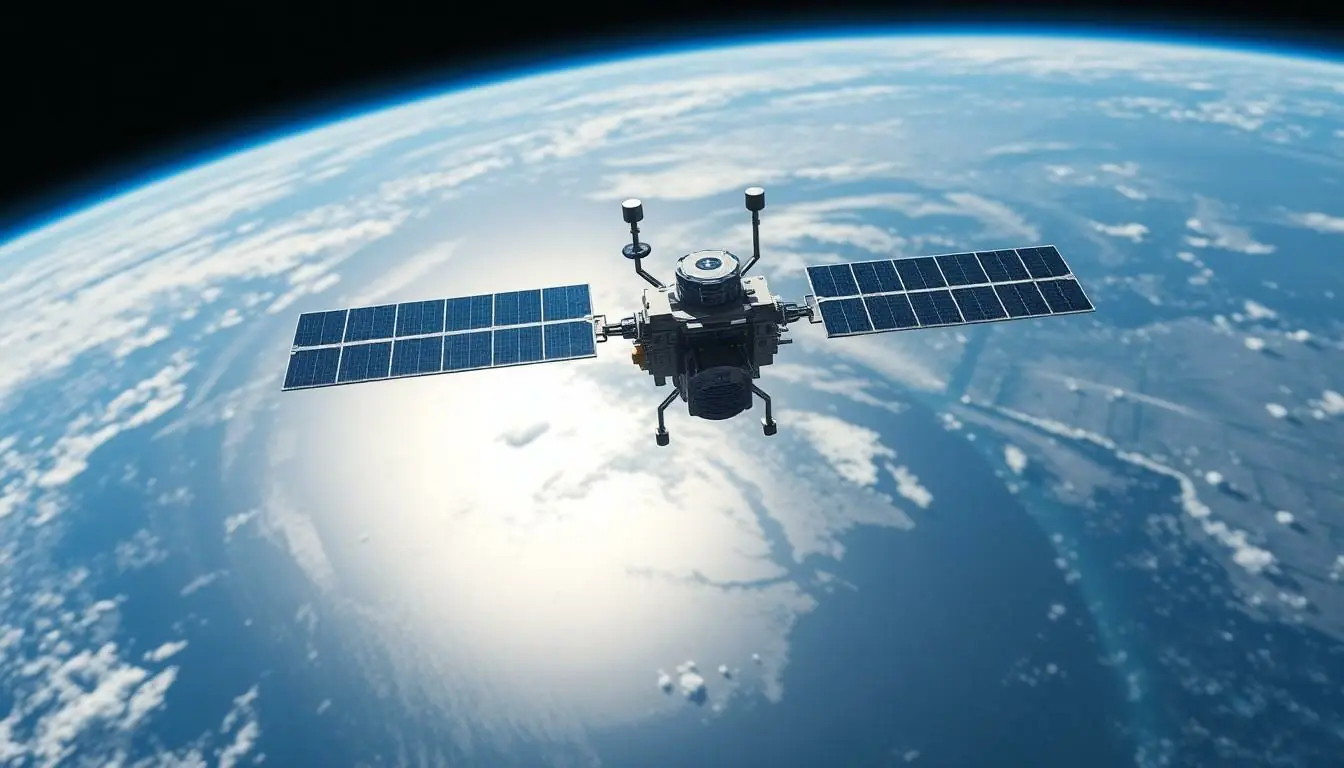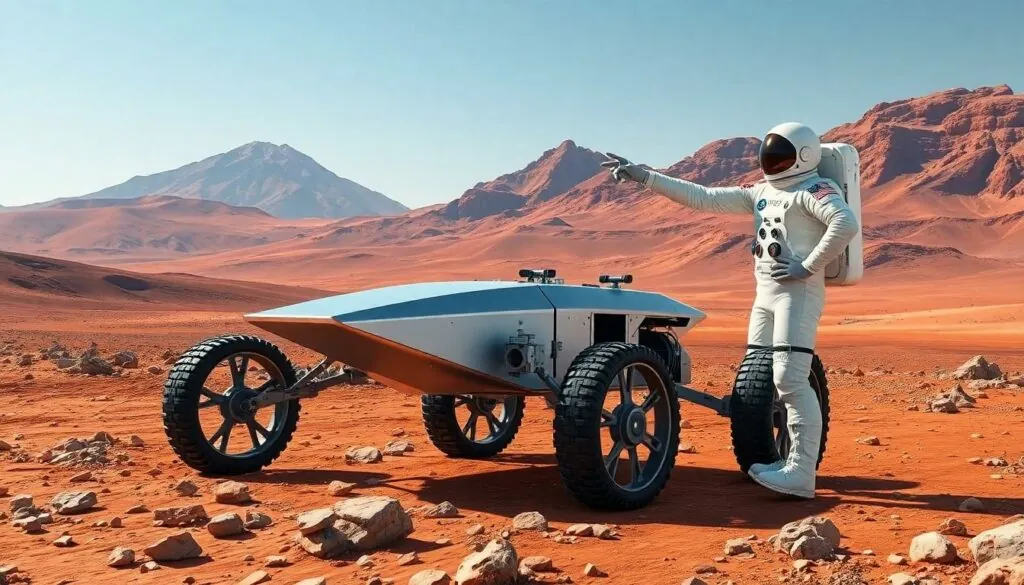Table of Contents
ToggleWhen it comes to space technology, the universe is a treasure trove of innovation that’s more exciting than a cat in zero gravity. From satellite communication that keeps you connected to your favorite cat memes to rovers exploring Mars like they’re on a cosmic road trip, space tech is revolutionizing life on Earth and beyond.
These remarkable advancements not only push the boundaries of exploration but also spark curiosity and creativity. Imagine a world where your morning coffee is brewed with water from a comet or where your GPS is powered by satellites orbiting the planet. Buckle up as we dive into some stellar examples of space technology that are not just out of this world but are also shaping the future right here on Earth.
Overview of Space Technology Examples
Space technology encompasses a range of innovations that improve exploration and enhance everyday life. Satellites, for instance, provide global communication and weather forecasting. These devices operate in geostationary and low Earth orbits to facilitate connectivity and monitoring.
Rovers play a crucial role in planetary exploration. NASA’s Perseverance rover, which landed on Mars in February 2021, conducts detailed assessments of the Martian surface. They analyze soil samples and search for signs of ancient life, furthering understanding of potential extraterrestrial habitats.
Space telescopes like Hubble enable astronomers to observe distant galaxies and celestial phenomena. These instruments capture images in various wavelengths, expanding knowledge of the universe. They offer insights into cosmic events, shaping theories about the origins of the universe.
Launch vehicles, such as SpaceX’s Falcon 9, revolutionize access to space. This reusable rocket significantly reduces costs associated with placing payloads into orbit. They enable both commercial and government missions, fostering a new era of space exploration.
3D printing technology has even found applications in space. NASA uses it to manufacture tools and components on the International Space Station. This innovation minimizes the need for resupply missions and streamlines on-site repairs.
In addition, space-based sensors monitor Earth’s environment. These tools track climate change, natural disasters, and agriculture patterns. They provide essential data that inform global sustainability efforts and disaster response strategies.
Advances in propulsion systems enhance space travel efficiency. Ion propulsion systems, for example, allow spacecraft to travel longer distances with less fuel. They pave the way for potential missions to distant destinations like Europa or Titan.
Satellite Technology

Satellite technology plays a crucial role in modern communication and observation. These innovations not only facilitate global connectivity but also provide essential data for various applications.
Communication Satellites
Communication satellites transmit signals for television, radio, and internet services. They orbit Earth at geostationary positions, enabling constant coverage over specific areas. Examples include Intelsat and Iridium satellites, which serve millions of users worldwide. Each satellite operates through a network of ground stations, ensuring reliable connections. Increasingly, companies explore low-Earth orbit satellites, like SpaceX’s Starlink, to enhance global broadband access. Such systems significantly reduce latency, offering users faster internet speeds.
Earth Observation Satellites
Earth observation satellites monitor the planet’s surface and environment. These satellites capture images and data on weather patterns, land use, and natural disasters. Notable examples include NASA’s Landsat program and the European Space Agency’s Sentinel satellites. Each satellite contributes to climate research and disaster response, providing vital information for emergency services. They also support agriculture by delivering insights on crop health and water resources. Using this data, scientists and policymakers can make informed decisions for sustainable development and environmental protection.
Space Exploration Technologies
Space exploration technologies include an array of tools and systems designed to navigate the cosmos and uncover its mysteries. Innovations in this field demonstrate humanity’s ambition to explore beyond Earth.
Rovers and Landers
Rovers play a crucial role in planetary exploration by traversing surfaces and conducting experiments. NASA’s Perseverance, for example, analyzes Martian soil while searching for signs of past life. Landers, such as the InSight mission, gather vital data about the Martian geology and atmosphere. These technologies expand our understanding of planetary environments and promote discoveries that reshape our notions of life beyond Earth.
Space Probes
Space probes serve as the vanguard of interstellar exploration, traveling vast distances to gather data. Voyager 1 and 2, launched in 1977, have ventured into interstellar space, providing invaluable information about the outer planets. Newer probes like Parker Solar Probe aim to study the Sun’s corona, informing our grasp of solar dynamics. Each mission contributes significantly to science, fostering insights that advance space technology and inform future explorations.
Launch Systems
Launch systems play a pivotal role in transporting payloads into space. They encompass various technologies that facilitate space exploration and satellite deployment.
Rocket Technology
Rocket technology forms the backbone of modern space exploration. It involves engines that operate based on Newton’s third law of motion, producing propulsion by expelling exhaust gases. Notable examples include the Space Launch System (SLS), designed by NASA to carry astronauts and cargo beyond low Earth orbit. Another example is the Atlas V rocket, used for launching satellites and interplanetary missions. Innovations in rocket fuel types, including liquid and solid propellants, contribute to increased efficiency and performance levels.
Reusable Launch Vehicles
Reusable launch vehicles redefine access to space by significantly reducing costs. SpaceX’s Falcon 9 exemplifies this approach, as it can land vertically after launch and be reused on subsequent missions. This technology leads to shorter turnaround times between launches, enhancing operational efficiency. Blue Origin’s New Shepard also incorporates reusable elements, designed for suborbital flights. Frequent recoveries of these vehicles demonstrate the viability of sustainable space transport, sparking interest in the commercialization of space travel.
Spacecraft Innovations
Innovations in spacecraft technology enhance exploration and research capabilities in space. Manned and unmanned spacecraft serve distinct purposes in this field.
Manned Spacecraft
Manned spacecraft facilitate human missions beyond Earth’s atmosphere. Notable examples include NASA’s Orion spacecraft, designed for deep-space missions, and SpaceX’s Crew Dragon, which transports astronauts to the International Space Station (ISS). These vehicles utilize advanced life support systems, ensuring astronaut safety during long-duration flights. Each mission emphasizes training and redundancy in systems to handle potential emergencies. Furthermore, advancements in spacecraft materials contribute to improved thermal protection and structural integrity, enhancing mission success rates.
Unmanned Spacecraft
Unmanned spacecraft play crucial roles in data collection and planetary exploration. NASA’s Mars rovers, including Perseverance and Curiosity, analyze Martian soil and atmosphere, searching for signs of past life. Space probes like New Horizons, which successfully visited Pluto, gather vital information about distant celestial bodies. Each unmanned mission employs innovative technologies such as autonomous navigation systems, allowing for extended missions in harsh environments. Satellites, including the Hubble Space Telescope, capture high-resolution images of galaxies, offering insights into the universe’s formation and evolution.
Space technology continues to push boundaries and redefine human potential. The innovations discussed not only enhance exploration but also improve daily life on Earth. As advancements like reusable rockets and sophisticated satellites emerge, they pave the way for a future where space resources become integral to our lives.
The creativity and curiosity driving these developments inspire a new generation to explore the cosmos. With each breakthrough, humanity moves closer to understanding the universe and its possibilities. The journey has just begun, and the potential for discovery is limitless.





